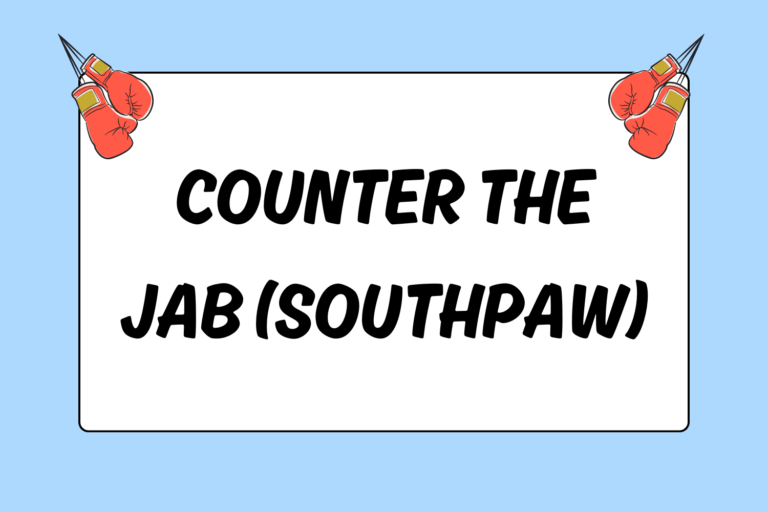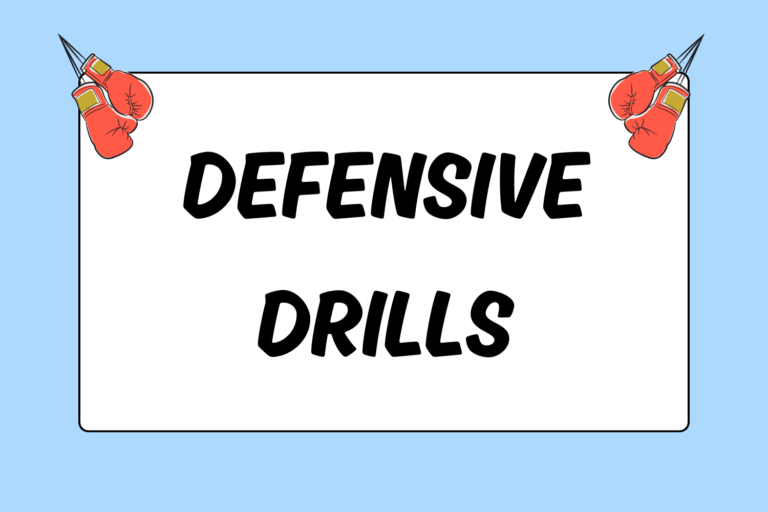The straight right, also known as the cross, is one of boxing’s most dangerous punches. This simple, yet powerful punch accounts for a significant percentage of knockouts at all levels. You need to be able to defend and counter against an opponents’ cross if you want to become a menacing opponent. This guide reviews counterpunching fundamentals and focuses on the best ways to effectively defend against and counter the cross.
The Fundamentals of Countering
Counterpunching refers to the following sequence:
- Defending against an incoming punch.
- Quickly capitalizing on the temporary vulnerabilities of your opponent with your own punch or combination of punches.
Some fighters are known as “counterpunchers” because they prefer to have their opponent throw the first punch. Once the opponent throws a blow, the counterpuncher exploits the opponent’s weaknesses with quick, reactive punches. Counterpunchers are generally skilled defensively and have clear vision.
You will inevitably use counterpunching techniques in your game, regardless of the boxing style you favor. The rest of this guide focuses on defending against the straight right and responding with effective shots.
Blocking the Cross & Countering
When the straight right is thrown at your head, you can block it by rotating inward and taking the punch on the back of your left glove. Your glove must be tight to your head as you rotate, otherwise it will fly back into your face when the punch lands.
When the straight right is thrown at your body, you can block it by bending your knees slightly and rotating inward so that the punch lands on your left elbow. Your left glove and elbow should both be tight to your body as you defend in this manner. Blocking with your elbow could potentially debilitate your opponent — broken or bruised hand/wrist bones are common injuries. A weakened opponent is a vulnerable opponent.
As you torque your body inward to block, you set yourself up to counter with a powerful straight right of your own. Your bodyweight shifts slightly to your right foot as you block, and then to your left foot as you throw your straight right hand. The movement for this counter should be fluid. You can throw more advanced combinations — such as a cross, left hook, cross (2-3-2) combo — once you are comfortable with the single punch counter.
Lastly, keep in mind that a right uppercut is sometimes more effective than the straight right hand. The right uppercut is a more appropriate counterpunch if your opponent leans too far forward when throwing his straight right. The uppercut is also useful when your opponent throws a straight right at close range. Distance always determines the best counterpunch.
Hot Tip: Avoid the Left Hook
Punch combinations often include a straight right hand followed immediately by a left hook. Because this combination is so prevalent, you must avoid the left hook that may follow your opponent’s right hand. However, you should land your counter right hand before your opponent can land his left hook. As the saying goes, the shortest distance between two points is a straight line.
Slipping the Cross & Countering
Another useful technique involves slipping your opponent’s cross, and then countering. Slip to the left by rotating your right hip forward and keeping your chin tucked. Keep your hands tight to your head in a defensive position.
You can implement your counter once you’ve slipped and avoided your opponent’s cross. The best counter in this situation is a left hook, which can be thrown to your opponent’s body or head. In fact, you can throw two hooks in a row if you’re comfortable with the combination. Most fighters, however, naturally end up throwing a left hook and cross (3-2) combo, which works equally well.
Stay on your toes, because your opponent might throw a soft left hand to set you up for a powerful left hook of his own. There are two steps you can take in order to avoid getting hit by the possible left hook:
- Keep your right hand tight to your face.
- Slip left to avoid his cross, and then continue your movement by weaving right.
Weaving removes you from the danger zone if he follows with his hook. Initially, this technique won’t involve a counterpunch. It will, however, allow you to read the tendencies of your opponent. Does he tend to finish his combination with his right hand, his hook, or his jab? You can feel him out at first by constantly slipping, ducking, and moving your head. After you’ve slipped and weaved several times, add a left hook to the body as you weave under. Your natural movement as you weave creates significant power for that left hook to the body.
Hot Tip: An Advanced Move
Advanced fighters use an effective defensive technique, called rolling. Rolling involves turning your torso inward and shifting more of your weight to your back foot. An effective counterpunch in response to the straight right hand involves rolling back and simultaneously throwing a left hook to your opponent’s body. It’s natural to shift your weight from your front foot to your back foot when throwing a left hook. This counter involves your natural instincts, but requires practice — the timing needs to be precise.
Work the Body & Head
Advanced boxers are able to counterpunch a counterpunch. For this reason, always keep your hands up and head moving. In addition, it would behoove you to switch up your target from his body to his head, and vice versa. By landing shots on both his body and head, you limit his ability to predict your next shot and counter with one of his own.





